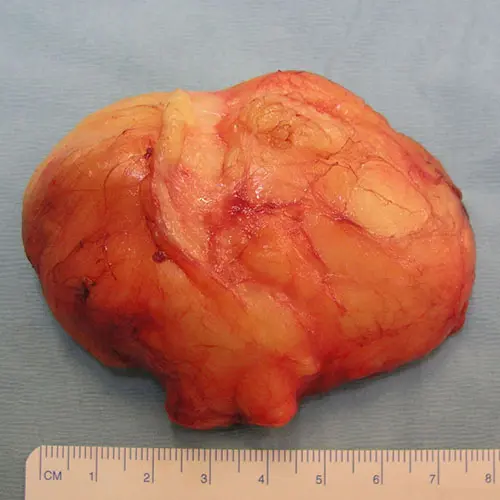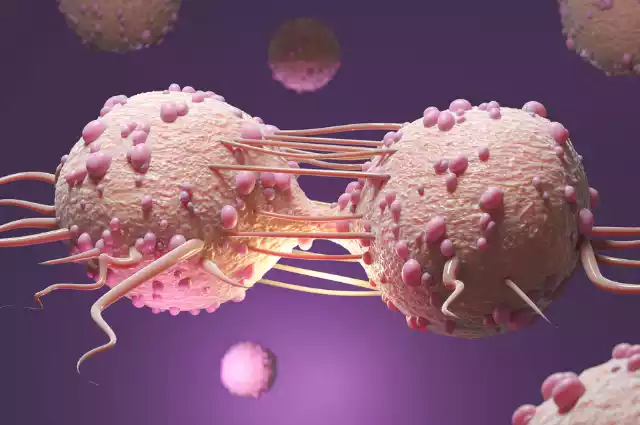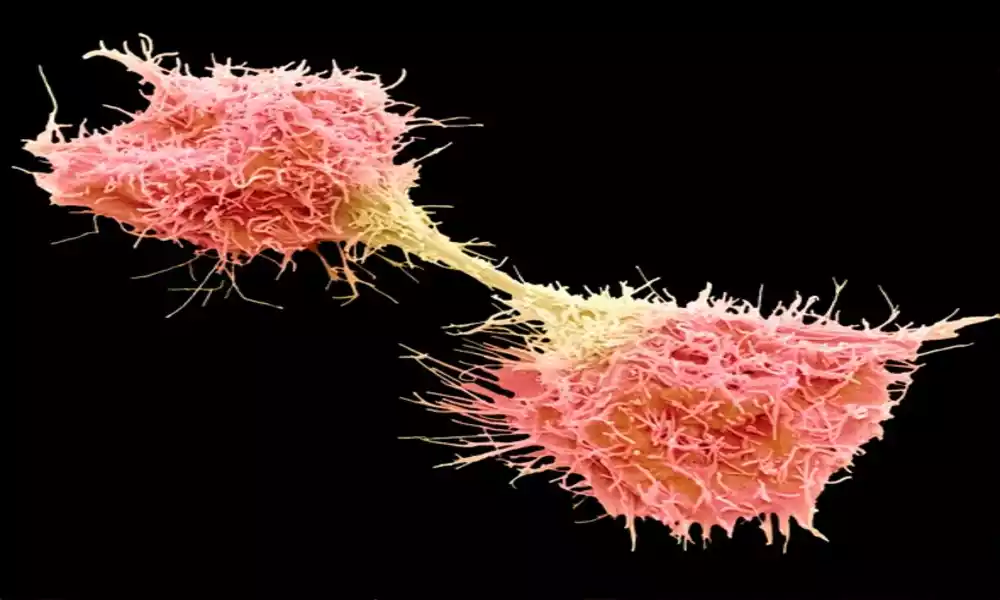We delve into the critical distinction between benign fatty lumps, known as Fatty Lump, and Cancer. Understanding this difference is paramount, as it guides decisions related to healthcare, treatment, and overall well-being. Let’s embark on this journey to illuminate the contrasts between these two entities and underscore their significance in our lives.
What is Fatty Lumps (Lipomas)?
A fatty lump, medically known as a lipoma, is a common benign (non-cancerous) growth of fat cells. Lipomas typically develop just beneath the skin, but they can also occur deeper within the body, although this is less common.

Here are some key characteristics of lipomas:
- Composition: Lipomas consist of a collection of mature fat cells enclosed in a thin, fibrous capsule. These fat cells are typically the same as those found elsewhere in the body.
- Texture and Appearance: Lipomas often feel soft to the touch and are usually painless. They are usually movable beneath the skin when touched and can vary in size, ranging from as small as a pea to several centimeters in diameter.
- Location: Lipomas can develop anywhere on the body. Common sites include the neck, shoulders, back, abdomen, and arms, but they can occur on any part of the body.
- Growth: Lipomas tend to grow slowly over time. They are generally harmless and do not invade nearby tissues or organs. However, in rare cases, they can become larger or cause discomfort if they press against nerves or blood vessels.
- Pain: Lipomas are typically painless, but some people may experience mild discomfort or pain if the lipoma presses on nearby nerves or tissues.
- Risk Factors: While the exact cause of lipomas is not always clear, they are more common in adults between the ages of 40 and 60. There may also be a genetic predisposition, as lipomas can run in families.
- Diagnosis: Lipomas are usually diagnosed through a physical examination by a healthcare provider. In some cases, imaging tests such as ultrasound or MRI may be used to confirm the diagnosis or to rule out other conditions.
- Treatment: In most cases, lipomas do not require treatment unless they become painful, grow too large, or cause cosmetic concerns. If treatment is necessary, surgical removal of the lipoma is a common option.
It’s important to note that lipomas are generally not cancerous, and the vast majority of them are harmless. However, if you notice any new lumps or growths on your body, it’s essential to have them evaluated by a healthcare professional to ensure they are benign and not indicative of a more serious condition.
What are Cancerous Tumors?
Cancerous tumors, also known as malignant tumors or cancer, are abnormal growths of cells that have the potential to invade and damage surrounding tissues and, in many cases, spread to other parts of the body. Unlike benign tumors (such as lipomas), cancerous tumors are characterized by uncontrolled cell growth and a lack of normal cell function.

Here are some key characteristics of cancerous tumors:
- Uncontrolled Cell Growth: Cancer begins when normal cells undergo genetic mutations that cause them to grow and divide uncontrollably. These mutated cells form a mass of tissue, known as a tumor.
- Invasion: Cancer cells have the capacity to infiltrate surrounding tissues and organs. They can infiltrate and disrupt the normal functioning of surrounding structures.
- Metastasis: One of the defining features of cancer is its ability to metastasize, which means cancer cells can break away from the original tumor, enter the bloodstream or lymphatic system, and spread to distant parts of the body. This is how cancer can affect multiple organs and systems.
- Heterogeneity: Cancerous tumors often consist of a mix of different types of cells, which can make them difficult to treat effectively. These cells may have varying degrees of aggressiveness and resistance to treatments.
- Abnormal Cell Structure: Under a microscope, cancer cells appear abnormal and have irregular shapes and sizes. They may also have an increased number of dividing cells compared to healthy tissue.
- Angiogenesis: Cancer cells can stimulate the growth of new blood vessels (angiogenesis) to supply the tumor with nutrients and oxygen, allowing it to grow rapidly.
- Risk Factors: Various factors can increase the risk of developing cancer, including genetic predisposition, exposure to carcinogens (cancer-causing substances), lifestyle factors (e.g., tobacco use, poor diet), and infections (e.g., HPV and cervical cancer).
- Diagnosis: The diagnosis of cancer typically involves a combination of tests, including biopsies (the removal of a small sample of tissue for examination), imaging studies (e.g., X-rays, CT scans, MRI), and blood tests to identify tumor markers.
- Staging: Cancer is often staged to determine the extent of its spread. Staging helps guide treatment decisions and prognosis. The most common staging system is TNM, which evaluates the size of the tumor (T), the involvement of nearby lymph nodes (N), and the presence of metastasis (M).
It’s important to note that cancer is a diverse group of diseases, with many different types and subtypes, each with its own characteristics and treatment approaches. Early detection and timely intervention are crucial for improving the prognosis and outcome of individuals with cancer.
Fatty Lump and Cancer Comparison Chart
Here’s a comparison chart outlining the key differences between fatty lumps (lipomas) and cancerous tumors:
| Characteristic | Fatty Lump (Lipoma) | Cancerous Tumor |
|---|---|---|
| Nature | Benign (non-cancerous) | Malignant (cancerous) |
| Composition | Composed of mature fat cells | Abnormal, rapidly dividing cells |
| Texture and Appearance | Soft, usually painless | Can vary, often invasive |
| Growth Rate | Slow | Rapid or variable |
| Invasiveness | Typically non-invasive | Invasive, can damage nearby tissues |
| Pain | Generally painless | May cause pain or discomfort |
| Mobility | Often movable beneath the skin | May or may not be movable |
| Location | Can occur anywhere on the body | Varies depending on cancer type and origin |
| Risk Factors | Genetic predisposition, age, gender | Genetic mutations, carcinogens, lifestyle factors |
| Metastasis | Does not metastasize | Has the potential to metastasize |
| Diagnosis | Physical examination may use imaging | Biopsy, imaging, blood tests |
| Treatment | Often not required, removal for cosmetic reasons or discomfort | Varied approaches (surgery, radiation, chemotherapy, immunotherapy) |
Please note that while this chart provides a general comparison, the specifics of any individual case can vary. If you suspect a lump or tumor, it’s essential to consult a healthcare professional for a proper diagnosis and appropriate management.
Importance of understanding the difference between fatty lumps and cancer
Understanding the difference between fatty lumps and cancer is crucial because it can:
- Guide Treatment: Accurate diagnosis ensures the right treatment approach—surgical removal for lipomas, while cancer requires specific therapies like surgery, chemotherapy, or radiation.
- Prevent Anxiety: Knowing a lump is benign alleviates unnecessary worry and stress associated with potential cancer.
- Enable Early Intervention: Recognizing cancer early significantly improves prognosis, emphasizing the importance of prompt medical attention.
- Avoid Unnecessary Procedures: Correct identification prevents invasive procedures for harmless lumps, reducing healthcare costs and discomfort for patients.
- Save Lives: Early detection and treatment of cancer can be life-saving, making differentiation between benign and malignant lumps a matter of life and death.
Similarities between Fatty Lump and Cancer
While fatty lumps (lipomas) and cancerous tumors are fundamentally different, they do share some similarities:
- Both Can Form Lumps: Lipomas and cancerous tumors can manifest as palpable lumps or masses in the body, which may be discovered during self-examination or clinical evaluation.
- Both May Require Medical Attention: While lipomas are typically benign and often do not require treatment unless they cause discomfort or cosmetic concerns, both lipomas and cancerous tumors necessitate medical evaluation to determine their nature and appropriate management.
- Imaging May Be Used: In diagnosing both conditions, healthcare providers may employ imaging techniques such as ultrasound, MRI, or CT scans to gain a better understanding of the lump’s characteristics and location.
It’s important to note that despite these similarities, the differences between lipomas and cancerous tumors are far more significant in terms of their nature, behavior, and implications for health. Consulting a healthcare professional for a precise diagnosis is essential when dealing with any suspicious lump.
Recognizing and Monitoring Lumps
Recognizing and monitoring lumps on your body is essential for your overall health. Here’s a simplified guide on how to do this:
- Self-Examination: Regularly inspect your body by gently feeling for any unusual lumps or bumps using your hands. Pay attention to areas like the breasts, testicles, neck, and armpits.
- Consistency Check: Be aware of what feels normal for you. Familiarity with your body’s usual texture helps in spotting changes.
- Use a Mirror: For hard-to-see areas, like your back, use a mirror or ask someone for assistance.
- Record Changes: Note any changes in a lump’s size, shape, or how it feels. Also, watch for unusual skin changes like redness or dimpling.
- Pain or Discomfort: Pay attention to any pain or discomfort associated with the lump, and communicate this to your healthcare provider.
- Skin Changes: Examine the skin over the lump for any unusual alterations.
- Seek Professional Advice: If you find a lump or any concerning changes, consult a healthcare professional for a thorough evaluation.
- Follow-Up: If advised by your healthcare provider, schedule follow-up appointments to monitor any changes in the lump.
- Consider Risk Factors: Be mindful of your personal and family medical history, as this can affect your risk for certain types of lumps or cancer.
- Stay Informed: Educate yourself about common lumps and their associated risks to empower yourself to take action when necessary.
Vigilance and early detection can be vital in identifying and addressing any potential health concerns related to lumps. Always consult with a healthcare professional for a proper diagnosis and guidance on the next steps.
Case Studies and Examples
Case studies and examples can provide valuable insights into the differences between fatty lumps (lipomas) and cancerous tumors, as well as the importance of proper diagnosis and treatment
Here are a few illustrative scenarios:
Case Study 1: Lipoma (Fatty Lump)
Patient: Sarah, a 45-year-old woman, noticed a soft, painless lump on her upper arm.
Diagnosis: After a physical examination and imaging tests (ultrasound and MRI), her doctor identified the lump as a lipoma, a benign fatty tumor.
Treatment: Sarah’s lipoma was not causing any discomfort, so her doctor advised monitoring it. She opted not to have it removed due to its harmless nature.
Case Study 2: Breast Cancer (Cancerous Tumor)
Patient: James, a 55-year-old man, found a lump in his breast during a self-examination.
Diagnosis: James underwent a mammogram and biopsy. The results confirmed a malignant tumor (breast cancer).
Treatment: James’s cancer was at an early stage, and he received a treatment plan that included surgery to remove the tumor, followed by radiation therapy and hormonal therapy. Early detection played a crucial role in his successful treatment.
Case Study 3: Misdiagnosis Delayed Treatment
Patient: Maria, a 40-year-old woman, had a lump on her neck, which she assumed was a lipoma based on its painless, soft texture.
Misdiagnosis: Initially, a primary care physician diagnosed it as a lipoma without further testing. However, the lump continued to grow slowly over several months.
Correct Diagnosis: Maria sought a second opinion from an oncologist who recommended a biopsy. The lump turned out to be a rare form of cancer called a sarcoma. Delayed diagnosis affected the treatment options and prognosis.
These case studies emphasize the importance of accurate diagnosis and monitoring. While lipomas are usually harmless and can be left untreated, cancerous tumors require prompt evaluation and intervention. Additionally, cases like Maria’s highlight the significance of seeking a second opinion if a lump doesn’t behave as expected or if there are doubts about the initial diagnosis.
Conclusion
Distinguishing between fatty lumps and cancerous tumors is essential for timely and accurate medical intervention. While fatty lumps are usually harmless and often require no treatment, cancerous tumors demand early detection and proper management.
Regular self-examinations, professional evaluations, and vigilance empower individuals to make informed decisions about their health and well-being. By understanding these differences, we can take proactive steps to ensure the best possible outcomes for our health.




